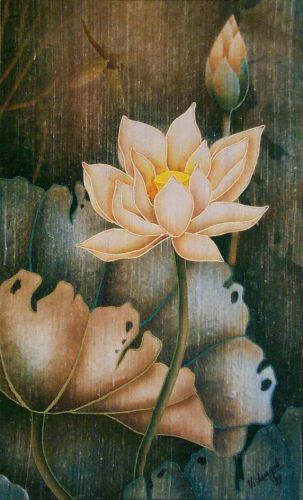(Alistair Shearer, The Hindu Vision, Thames and Hudson, 1993, pp. 15-16)

| "According to traditional Indian belief... the
purpose of the artist was to reproduce those Divine forms
which... lead the spectator to union with the Divine.
Exalted though his task was, there was no division
between artist and craftsman in ancient India. The most
usual word for art (shilpa)
covered a huge range of creative and useful endeavour
spread over all aspects of culture. Shilpa
was divided into sixty-four branches which, in addition
to the visual arts of painting, sculpture and
architecture, included accomplishments ranging from dance,
music and engineering to cooking, perfumery and making
love. Art, in short, was the practice of all those
refined skills that enrich our being in the world,
bringing nourishment, fullness and delight to life. This
delight was not just pleasure, which depends on the
senses, but what is called in Sanskrit ananda,
an inner spiritual bliss that exists prior to, and
independent of, any sensory or mental stimuli. This state
of pure, unalloyed Being is the natural fruit of refining
senses and mind by leading them away from the field of
gross perception, through the subtle realms, to the
unbounded level of life, which is our own nature. The
attainment of this intrinsic bliss was not only the goal
of artistic endeavour but also the highest spiritual
experience and as such the effective aspect of
Enlightenment." (Alistair Shearer, The Hindu Vision, Thames and Hudson, 1993, pp. 15-16) |
 |